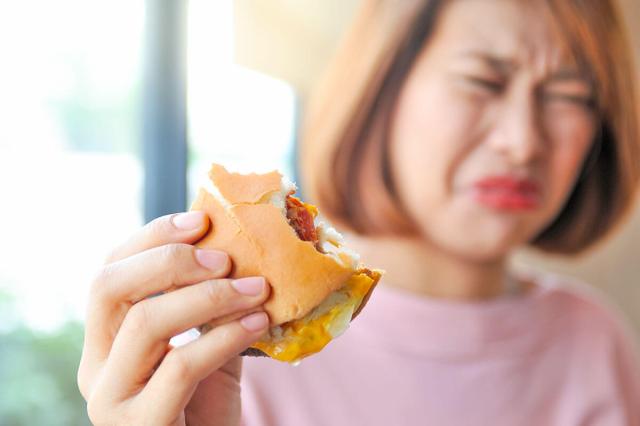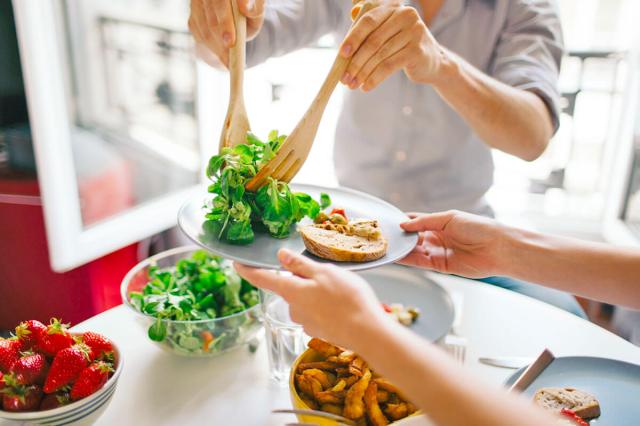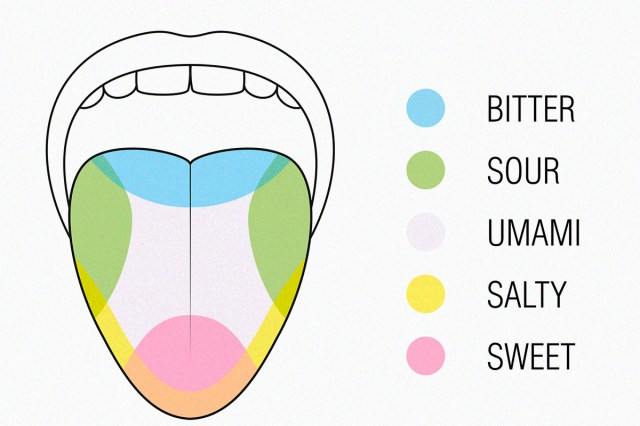
Our Taste Buds Require Saliva To Work
If we somehow completely dried off our tongue and then took a bite of food, we’d find the food suddenly has little to no flavor. This is because saliva is a critical component of our tasting capabilities. Chemicals responsible for flavor in food must first dissolve into some kind of liquid — in this case, saliva — before they can enter the taste buds and be analyzed by hundreds of sensory cells.

Some Humans Are “Supertasters”
Good news, picky eaters: Your touchy palate could be a sign that you’re a supertaster, a name given to people with a heightened sense of taste. Supertasters have been found to have more taste papillae on a 6-millimeter section of the tongue than the average individual — around 35 to 60 compared to the median 15 to 35. This makes them far more sensitive to flavor components of food and drink. Supertasters often find bitter foods such as spinach or coffee unbearably bitter, and it might not take much sugar for them to think something is cloyingly sweet.

Taste Preferences Are a By-Product of Evolution
Food and drink provide much more than pleasant flavors to enjoy, although they certainly do that, too. They also give us energy-dense nutrients and help control our sodium levels, and our taste buds help us decide which foods we need. Our preferential tastes stem from the centuries of evolutionary processes that taught us that bitterness can be a sign of toxicity, sourness can indicate unripe or spoiled foods, and sweetness often translates to energy.
One of the most interesting evolutionary effects on taste has to do with bitterness. Humans have approximately 25 bitter flavor receptors on our tongues, allowing us to differentiate between bitterness associated with toxic, sickness-inducing plants and other substances and the bitterness associated with good plants like leafy greens, radishes, and cauliflower. In contrast, humans only have two taste receptors for less risky flavors, like sweetness.
Our relationship with sweetness shines a fascinating light on the connection between the foods we eat and the chemicals in our brain. While it’s true that sugar provides energy, it can also be detrimental to our health when consumed in too-large quantities. Evolutionarily speaking, it would be reasonable to assume that we wouldn’t crave a surplus of sugar if it were actually bad for our well-being.
However, consuming sugar releases serotonin, a feel-good brain chemical that can deplete when we’re stressed, underfed, or in need of sleep. When we have intense sugar cravings, it’s not necessarily that our body is looking for sugar. Our brains might be on the hunt for serotonin via a chocolate bar or fizzy can of soda. Similar mechanisms are behind our craving fatty, oily foods. Our brains have released serotonin in the past when responding to these unhealthy but delicious flavors, thus, we continue to crave them.
Taste preferences can also vary by region and culture. A 1994 study found that Inuit populations are more sensitive to salt due to their heightened exposure to dangerous levels of saltwater in drinking water. The same study found that inhabitants of savanna landscapes have lower sensitivity to sweetness because naturally sweet foods, like fruit, are less common in the area. Cultural behaviors and norms can also affect taste.
Infants can form flavor preferences in utero based on what their mother eats. With enough generations of the same culture eating a certain food, some tastes will become naturally ingrained in our flavor palates as “good” or “bad.” In Western culture, vanilla is associated with sweetness because it’s so common in baked goods and sweet treats. But in east Asia, where vanilla is a common ingredient in savory dishes, these peoples don’t have the same sweet association.
More Interesting Reads

It’s Possible To “Trick” Our Taste Buds
The flavor-producing chemicals in foods and drinks are affected by the overall environment of our mouth. Alter the environment, and you can alter the flavor, essentially “tricking” the taste buds into perceiving something as sweet or bitter when it typically isn’t. For example, artichokes contain an antioxidant called cynarin that binds to sweet receptors on the tongue without activating them (otherwise, artichokes would taste sweet). When we take a drink of water after eating an artichoke, we wash the cynarin off the surface of the tongue, activating the sweet receptors of the brain and making the water taste sugary sweet.
A similar phenomenon also explains why orange juice tastes so terrible after we brush our teeth. Toothpaste contains a cleaning agent called sodium lauryl sulfate that scientists hypothesize reduces our ability to taste sweetness and maximizes our sensitivity to bitterness. Thus, when we take a swig of morning OJ after brushing our teeth, we taste all the juice’s acidity and bitterness and none of the sweetness.

Eating Spicy Foods Activates Pain Sensors in the Mouth
Our brains perceive spicy foods as “hot” even if the foods themselves are cold to the touch. This “heat” comes from temperature-sensitive pain fibers in the mouth that equate certain sensations, such as the burn of capsaicin (found in chile peppers), with high temperatures. When capsaicin activates the pain sensors, these sensors send signals to the brain that make the body believe it’s overheating. That’s why eating spicy food can lead to redness in the face, panting, and sweating. So, no, we’re not just imagining that habanero pepper hurts to eat — according to our brains, the food is actually painful.

The Traditional Tongue Map Has Been Scientifically Disproved
For years, we’ve based our understanding of flavor processing on a tongue map commonly taught in schools, which is based on a 1901 study by German scientist David Hanig that sought to explain the sensitivity of various parts of the tongue. The tongue map we’re familiar with divides the tongue into different taste zones, with bitter flavor receptors at the back of the tongue, sweet receptors at the tip, sour on the sides, and so on. Hänig’s research correctly found that parts of the tongue have greater quantities of taste receptors than others, but his map suggested that only certain areas of the tongue can perceive certain flavors, an idea that’s since been refuted by modern scientists. In reality, all five flavors — and the thousands of flavor combinations between them — are perceptible in all taste buds, whether they’re on the tip of the tongue, the back of the throat, in the nasal cavity, or anywhere else taste buds can be found.












